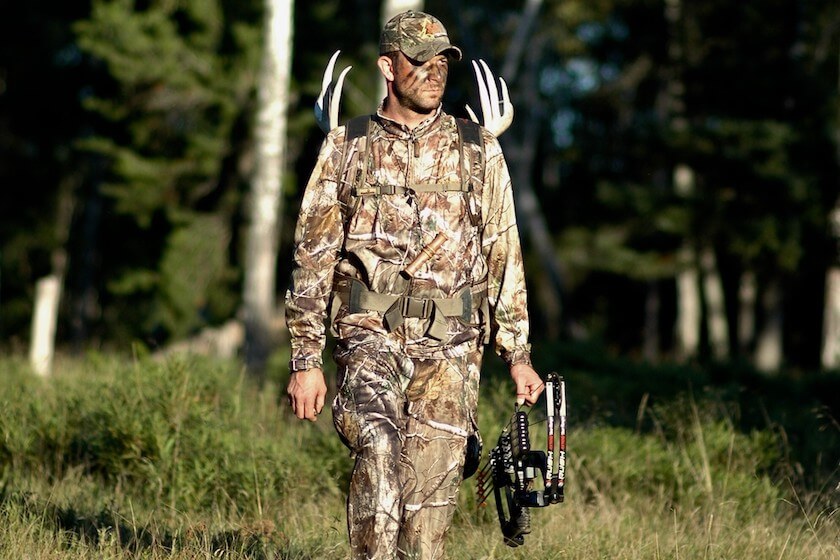
Packing Out Heavy: If coming out of the woods or off the mountain is all about coming out heavy with a big set of antlers and a load of fresh venison, a key to such success is to go in with a hunting pack that has the right tools at a hunter’s disposal.
I’ve been in a few needed-gear discussions through the years, and my pack is wiser and better for it after such campfire sessions.
In fact, if you happen to look through my pack right now, odds are you’ll find a few of those must-have items that weren’t always there before; things like a book or magazine to read, a roll of toilet paper, and a copy of the latest hunting regs.
By the way, if you’re going to rummage through my hunting pack, be sure to put down that package of Old Trapper Jumbo Kippered Beef Steak because it’s mine, and no, you can’t have it. The same goes for the Old Trapper Original Deli Style Beef Sticks, while we’re on the subject.
But there are other items in my pack besides some great-tasting beef jerky. And some, put simply, are so vital to a solid outcome that if you head into the woods without them, you’re not really ready to hunt, in my humble opinion.
With that in mind, here’s a guide to 10 indispensable items that every deer hunter will want to have handy in a hunting pack.
Table of Contents
Bright Stuff
In all my years of hunting, one of the most indispensable items I’ve made a habit of never leaving home without is what I call “the bright stuff.” That includes a compact and bright flashlight, like those made by Surefire or Streamlight, tools that can help a hunter get to the stand way before dawn, back to the truck well after sundown, and during the O’ Dark Thirty search for a downed buck.
You’ll also find a headlamp. And batteries, don’t forget the extra batteries. Why? Because nothing—and I mean nothing—is as worthless as a bright flashlight or headlamp that won’t shine on a moonless night.
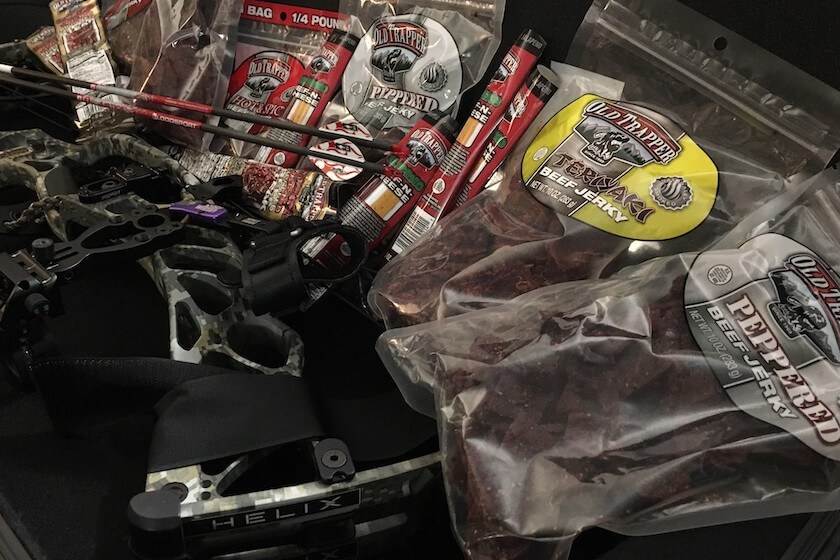
If being able to find your way into and out of the dark deer woods is one necessity in a hunting pack, so, too, is a way of field dressing a downed buck and notching a deer tag. After all, that’s the end goal of a deer hunt, right?
Early in my hunting career, there was always a Buck Knives 110 Folding Hunter—besides being a timeless classic in the hunting knife world, it was also a Christmas present from my late grandmother Zelma—tucked away in a zippered pocket. There’s also a Knives of Alaska Cub Bear caping knife and a KOA Bobcat hatchet tool as well.
And since knives can see their edges dulled from use in the field, be sure that you have a knife-sharpening device of some sort, something like the multi-function, portable sharpening system, Smith’s Pak Pal Pocket.

Stand Prep Gear
While on the subject of sharp things, don’t forget a few tools for prepping the area around your deer stand.
Obviously, a good limb saw is a fine start in this department, as is a pair of brush-cutting shears, or garden pruners, to help snip away a limb or two that might block a clear shot path when Mr. Big comes calling. Since some public hunting areas won’t allow cutting or pruning activity, a handful of black or brown zip ties is a must to hold back protruding vegetation along with a few feet of paracord for the same purposes.
Gloves
Most hunters carry a pair of camouflage gloves (don’t forget the face mask or head net, either) in their pack, gloves that will help hide hands from the prying eyes of a deer cruising through the woods.
But there are two other types of gloves you’ll want in your pack as well. The first is a pair of leather or canvas work gloves for dealing with moving big tree limbs, pushing logs out of the way, or dragging a big buck out of the woods.
And last—but certainly not least—is a pair of field-dressing gloves in your pack, indispensable tools when it comes time to getting a downed buck ready for transport back to camp. After all, you plan on punching a deer tag on your next hunt, right?
Hunting Extras
I used to think having an extra bowhunting release or supply of rifle or muzzleloader bullets was overkill and just added unnecessary weight to a pack that already seemed heavy enough.
That is, until I dropped one of those items to the ground 20 feet below my treestand as shooting time arrived. Or discovered that such vital necessities were back in my pickup truck, two miles back down the trail and minutes before I expected Old Swamp Daddy to show up. In such instances, what’re a few extra ounces worth?
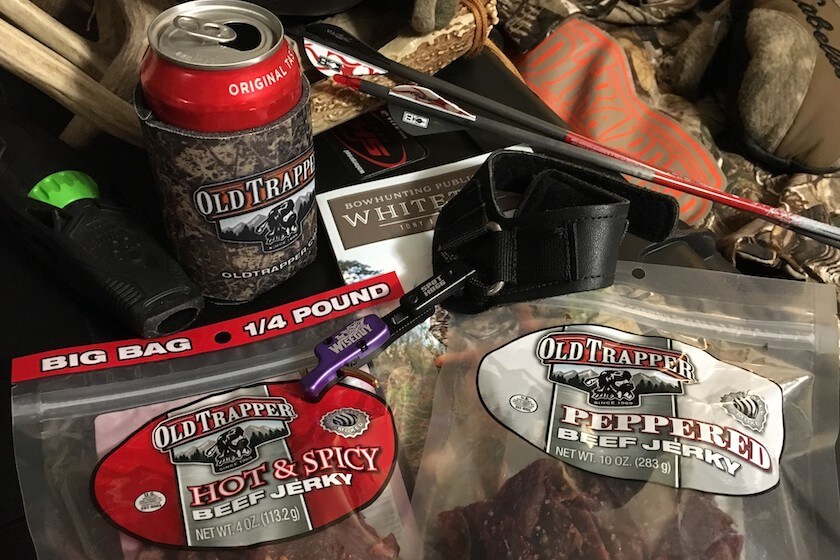
Rain Gear
I’ll be honest, if the day’s weather forecast shows an all-day downpour is coming, I’m probably going to skip out of deer hunting (unless there’s an enclosed hard ground blind I can sit comfortably in as everything gets drenched).
But for the times when an unexpected shower pops up on the radar, some lightweight rain gear is a blessing and a half, helping me stay warm, dry, and comfortable, just long enough for the woods to come alive as does and big-antlered bucks get up, shake themselves dry, and start to move again.
Hunting Calls
I’ll admit that I was once a skeptic about carrying hunting calls. You know, the extra weight thing, and the nagging question of whether or not they really worked.
But then came hunts where I saw firsthand proof that the grunt calls and rattling horns I wasn’t always sure about actually did work. In fact, I can still see the South Texas buck all wide-eyed and nostrils flaring as he came searching for a buck fight that didn’t exist.
Now, you’ll never find me in the deer woods these days without a grunt call, a fawn bleat call, and some way to simulate a pair of old bucks knocking their heads together again. Like doubting Thomas, I’m a believer now.
Power, Power, Power!
A high-school football coach friend of mine is fond of the running game for his program. After all, it’s worked wonders down through the years and sent a number of good running backs on to play college football. So, it’s no wonder that he often says that his favorite brand of gridiron action revolves around “Power, power, power!”
The same is true for deer hunters and the powering up of their smartphones or other electronic devices. While I could wax poetic here and say that we should leave such devices back at camp, none of us ever do.
And after texting back and forth to my wife about the adult kid’s Christmas lists, looking at e-mails from the boss, or checking the latest football score on a Saturday afternoon, I know firsthand how the cold temperatures and long hours of deer hunting can zap an electronic device of its life-giving power.
The solution? Keep a charged-up power supply handy in your pack, along with a power cord, and you’ll get through a long day of hunting with plenty of electronic juice to spare.
Hydration
In the good old days, I’d have probably just written something here about carrying a thermos of hot coffee or a bottle of water, something to wash lunch down and help keep a hunter hydrated.
But as a hunter moving through his 50s right now—loosely translated, that means that I have trouble staying alert and my muscles get sore pretty easily—I now opt for hydration that brings a benefit beyond simply slaking my thirst.
That means carrying a packet or two of hydration mixes from hunting nutritional product companies like Mossy Oak Wellness, Mtn Ops, or Wilderness Athlete, among others. Depending on what product you like, there are various flavor options as well as products that can help with muscle tissue recovery, a boost of energy without the caffeine-related crash, and even give a boost to your immune system.
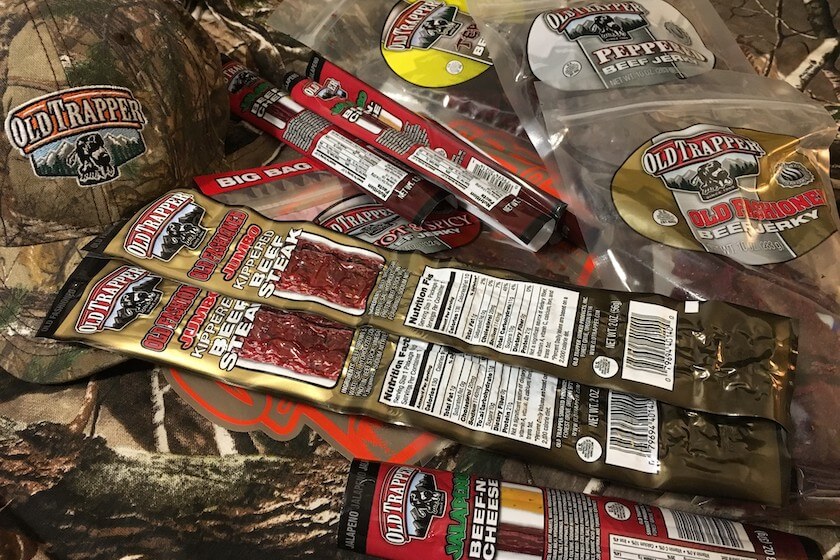
Nutrition
Last, but not least, you’ll want to make sure that your pack has some way to fuel the big hunting engine known as your body, a way of gaining some nutrition, a few calories, and staving off a growling stomach until you can get back to camp and can grab a hot meal.
When planning for a lengthy deer hunting sit, I’m going to be packing food items like a turkey sandwich or two, two or three packages of peanut butter crackers, and a few sleeves of my favorite nuts or trail mix.
Whatever is going into my pack, I want food and snack items that are protein-rich, low on fat, skinny on carbs and calories, aren’t terribly smelly, and come in packages that are easy to open and don’t make a lot of noise as I’m fumbling around.
That leads to one of deer hunting’s most perfect snack options, the beef jerky products made by Old Trapper, the Oregon-based company founded in 1969 that is one of America’s leaders in making tasty and nutritious jerky products like the company’s time-honored Old Fashioned Beef Jerky in the clear 10-ounce packaging.
From a nutritional standpoint, the Old Fashioned flavor checks all of the boxes for yours truly: it’s low in fat (as in zero percent for overall fat and saturated fat daily allowances), it’s low in per-serving calories (70) and carbs (6 grams), and it packs a powerhouse punch of protein (11 grams).
Not to mention that it’s plenty darn tasty and satisfying, too. Plus, if you’re familiar with the history of the Forest Grove, Oregon, jerky-making company, then you’ll recognize that it’s this jerky—and its lean cuts of seasoned and lightly brown sugared beef—that started Old Trapper’s run to the top of the mountain, all out of the back of a small grocery store.
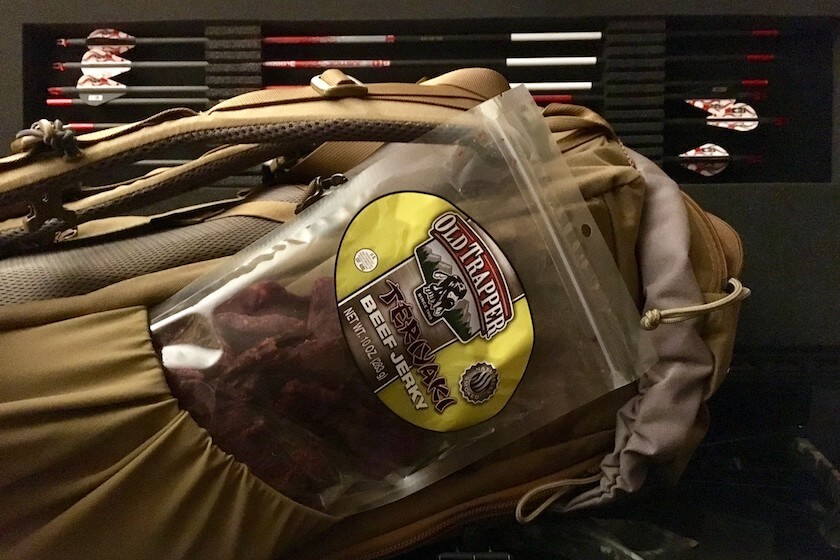
Today, the company still uses real wood, real smokehouses, and the time-honored processes that result in jerky that is never tough, always tasty, and a welcome part of any deer hunter’s pack.
Numerous other options are in the Old Trapper line-up too, including Old Trapper Teriyaki Beef Jerky; Old Trapper Peppered Beef Jerky; and Old Trapper Hot & Spicy Beef Jerky.
And don’t forget the Old Trapper Zero Sugar Beef Jerky; the oval coins of Old Trapper Old Fashioned Double Eagle Beef Jerky; or the company’s various snack stick products like the Old Trapper Teriyaki Deli Style Beef Stick and the Old Trapper Jalapeno Beef & Cheese Snack Stick among others.
In short, there’s a number of great items deer hunters need to keep in their hunting pack throughout hunting season, from the warm early days of September and October, to the bitter cold days of late December and early January as the buzzer gets ready to sound.
And while most all of these gear items are important in their own right, at the forefront of what needs to go into your pack are the beef jerky and meat snack products from Old Trapper, items that no deer hunting pack should be without.








































